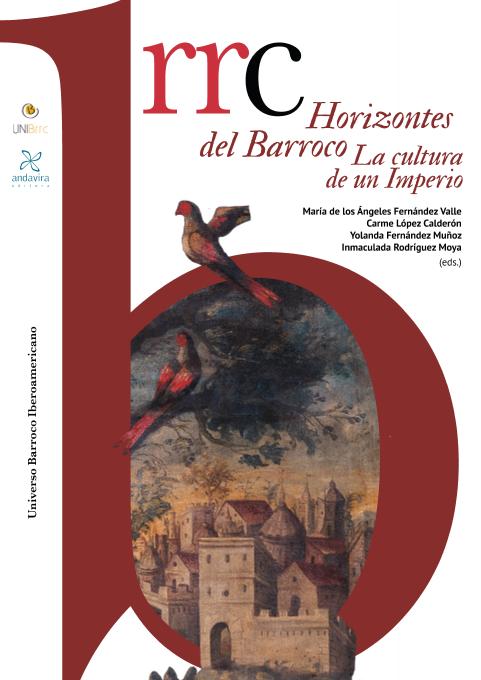Mostrar el registro sencillo del ítem
dc.contributor.author
Chiliguay, Alejandro Nicolás

dc.contributor.other
Fernández Valle, Maria de los Ángeles
dc.contributor.other
López Calderón, Carme
dc.contributor.other
Fernández Muñoz, Yolanda
dc.date.available
2024-04-19T12:17:32Z
dc.date.issued
2022
dc.identifier.citation
Chiliguay, Alejandro Nicolás; La composición del Cabildo Eclesiástico en el Tucumán del Barroco (1711-1734); Enredars; 23; 2022; 239-254
dc.identifier.isbn
978-84-126058-7-7
dc.identifier.uri
http://hdl.handle.net/11336/233547
dc.description.abstract
Durante la Edad Moderna los cabildos catedralicios habían sido unos espacios privilegiados de poder, generalmente en manos de las élites locales. Si bien en los últimos años se llevaron a cabo numerosos estudios sobre este cuerpo eclesiástico para algunas diócesis españolas e indianas, la situación contrasta con las escasas investigaciones al antiguo obispado del Tucumán. En este sentido, el presente trabajo tiene como finalidad indagar quiénes han sido las personas que ocuparon las diferentes prebendas del cabildo eclesiástico durante las primeras cuatro décadas del siglo XVIII. La reconstrucción de la composición del clero capitular se limitará solo a las dignidades y pretende ser un punto de partida para la elaboración de un futuro análisis sociológico del mismo.
dc.description.abstract
In the Early Modern Age, the cathedral chapters were privileged spaces of power, normally in the hands of the local elites. Although in recent years numerous studies on this ecclesiastical body have been carried out for some Spanish and Indian dioceses, the situation contrasts with the scarce research relative to the ancient bishopric of Tucumán. In this sense, the present work aims to investigate who were the people who occupied the different positions in the ecclesiastical chapters during the first four decades of the 18th century. The reconstruction of the social composition of the chapter clergy will be limited only to dignities and is intended as a starting point for the elaboration of a sociological analysis of it in the future.
dc.format
application/pdf
dc.language.iso
spa
dc.publisher
Enredars
dc.rights
info:eu-repo/semantics/openAccess
dc.rights.uri
https://creativecommons.org/licenses/by-nc-sa/2.5/ar/
dc.subject
Cabildo Catedralicio
dc.subject
Composición social
dc.subject
Tucumán
dc.subject
Francisco Bazán de Pedraza
dc.subject.classification
Historia

dc.subject.classification
Historia y Arqueología

dc.subject.classification
HUMANIDADES

dc.title
La composición del Cabildo Eclesiástico en el Tucumán del Barroco (1711-1734)
dc.title
The Composition of the Ecclesiastical Chapter in the Tucumán of the Baroque (1711-1734)
dc.type
info:eu-repo/semantics/publishedVersion
dc.type
info:eu-repo/semantics/bookPart
dc.type
info:ar-repo/semantics/parte de libro
dc.date.updated
2023-07-07T20:00:46Z
dc.journal.volume
23
dc.journal.pagination
239-254
dc.journal.pais
España

dc.journal.ciudad
Sevilla
dc.description.fil
Fil: Chiliguay, Alejandro Nicolás. Consejo Nacional de Investigaciones Científicas y Técnicas. Centro Científico Tecnológico Conicet - Salta. Instituto de Investigaciones en Ciencias Sociales y Humanidades. Universidad Nacional de Salta. Facultad de Humanidades. Instituto de Investigaciones en Ciencias Sociales y Humanidades; Argentina
dc.relation.alternativeid
info:eu-repo/semantics/altIdentifier/url/http://hdl.handle.net/10433/14764
dc.relation.alternativeid
info:eu-repo/semantics/altIdentifier/url/https://dialnet.unirioja.es/servlet/articulo?codigo=8632564
dc.relation.alternativeid
info:eu-repo/semantics/altIdentifier/url/https://www.upo.es/investiga/enredars/?page_id=2309
dc.conicet.paginas
578
dc.source.titulo
Horizontes del Barroco: La cultura de un imperio
Archivos asociados
